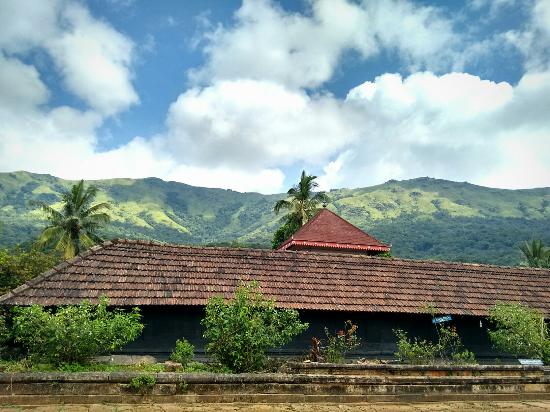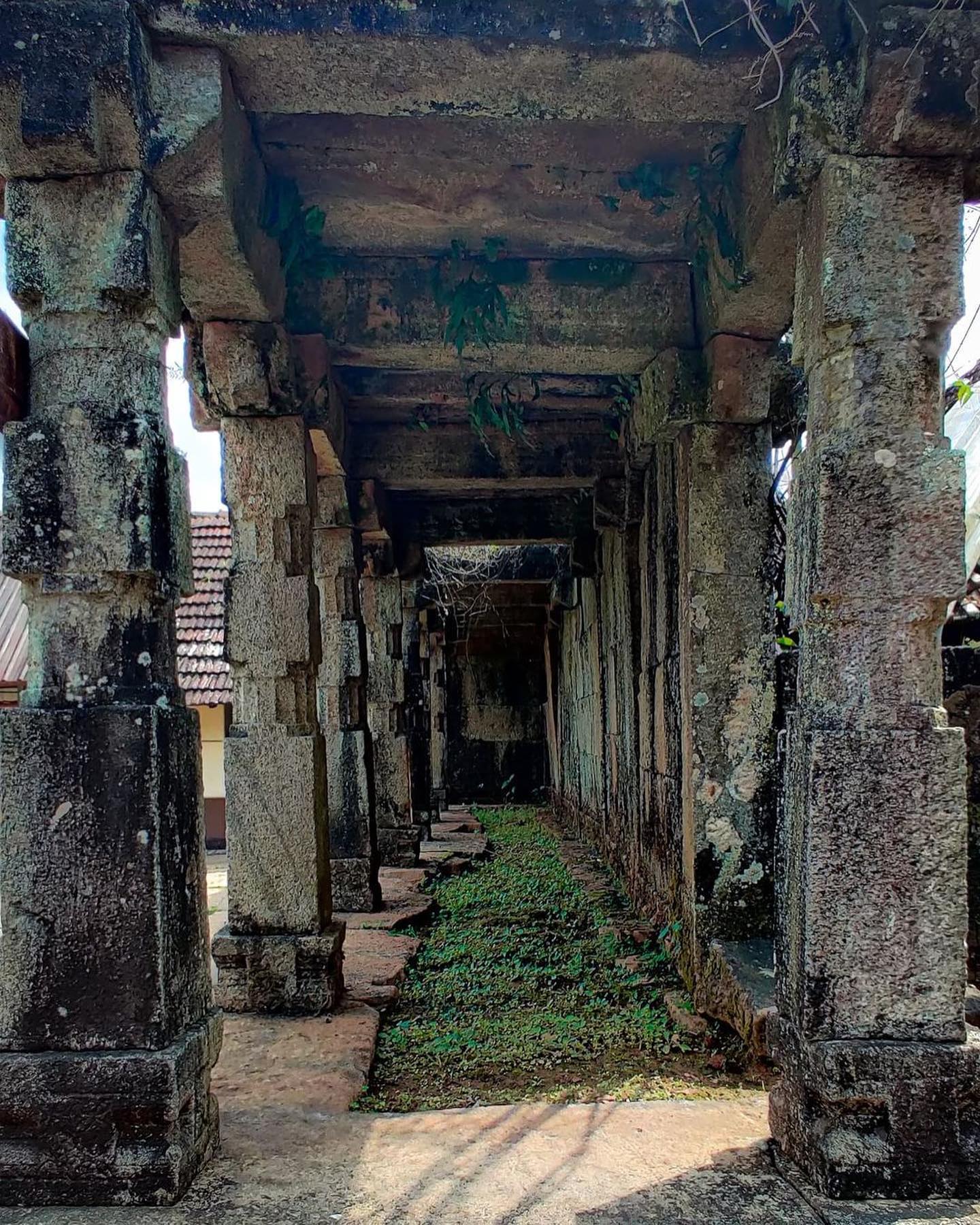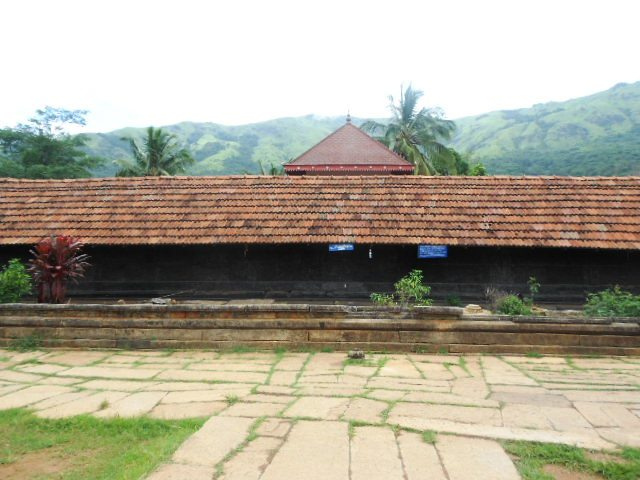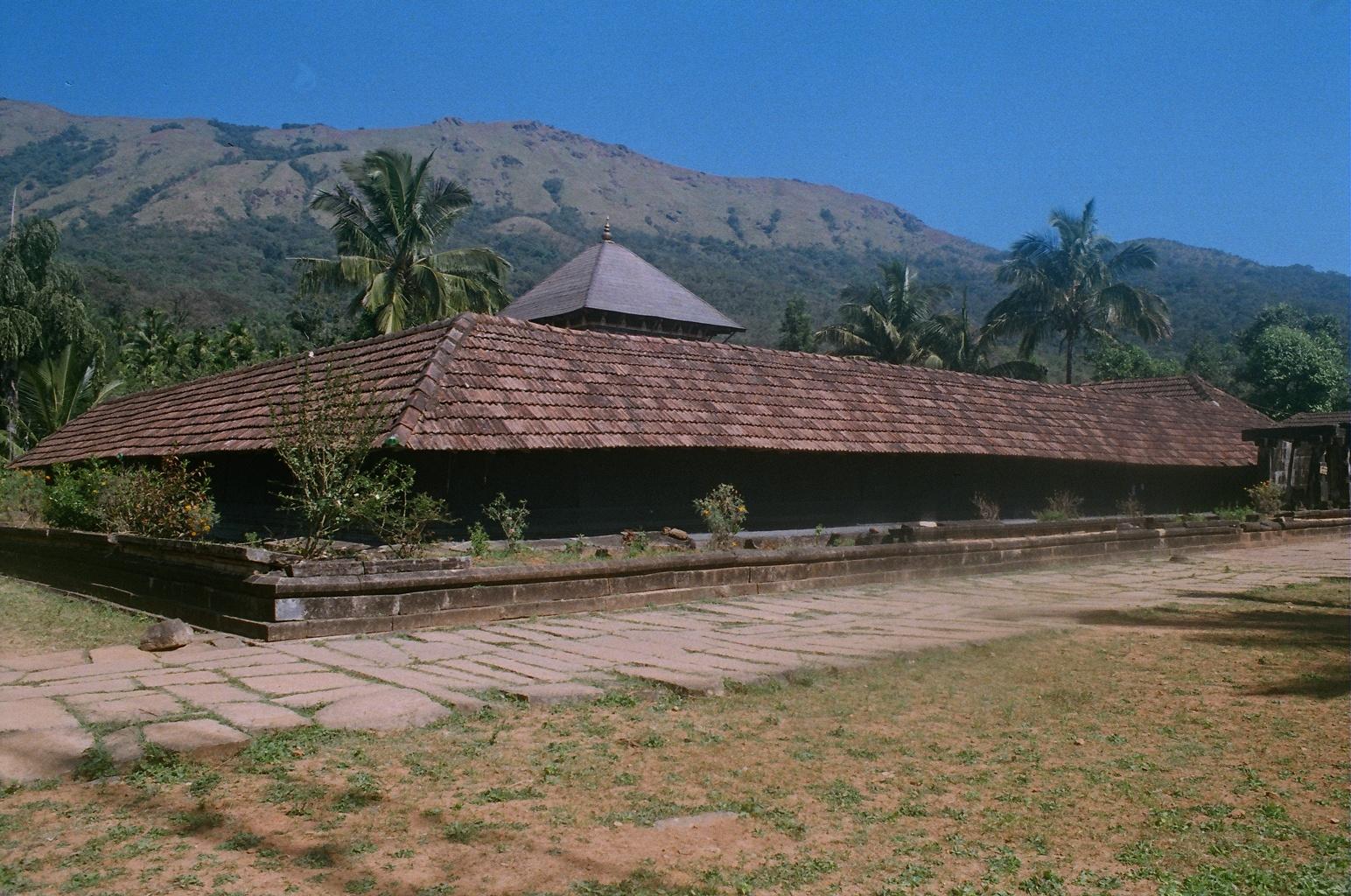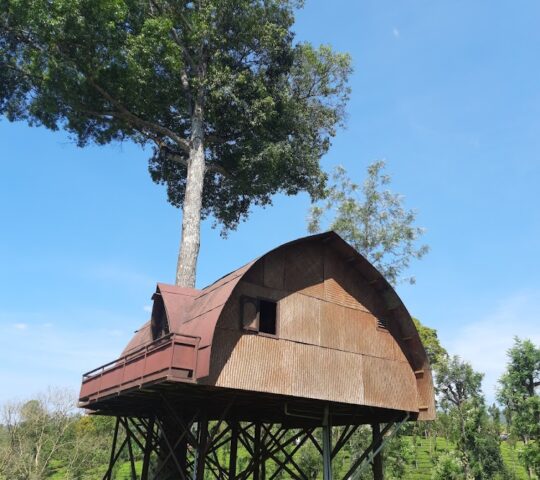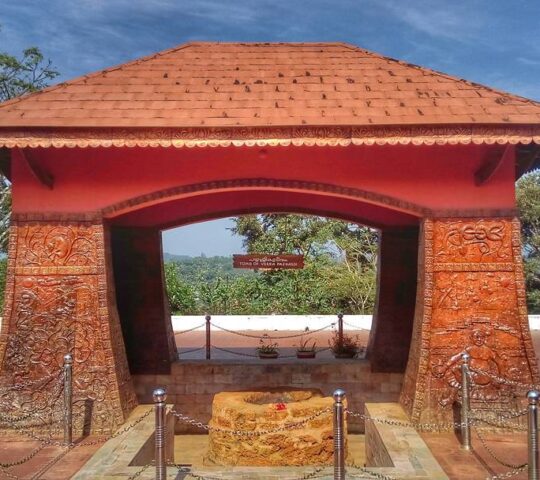Hightlight
-

-

-

-

Thirunelli Temple, located in the scenic district of Wayanad, Kerala, is a sacred shrine dedicated to Lord Vishnu. Revered for its spiritual significance and serene surroundings, the temple attracts devotees and tourists alike.
Location
Thirunelli Temple is situated in the lush green forests of the Brahmagiri hills, approximately 32 km from Mananthavady in Wayanad, Kerala. It is nestled close to the Papanasini stream, believed to have purifying properties. Visitors can reach the temple by driving from Wayanad or taking public transport to Mananthavady and then a local bus or taxi to the temple.
- Nearby Landmarks: Papanasini River, Brahmagiri Wildlife Sanctuary, Kuruva Island.
Historical Background
Thirunelli Temple, also known as the “Kashi of the South,” is steeped in rich history and mythology. According to legend, it was established by Lord Brahma himself and is one of the few temples where rituals for the deceased are performed, akin to those in Kashi. The temple dates back to the first millennium CE and is mentioned in ancient texts and Puranas. The surrounding area is replete with inscriptions and relics that point to its long-standing significance in Hindu culture.
Cultural Importance
Thirunelli Temple holds immense cultural and religious importance. It is not only a place of worship but also a center for performing last rites and rituals, attracting pilgrims from across India. The temple’s architecture reflects traditional Kerala style, and the sanctum sanctorum houses the deity of Lord Vishnu, attracting numerous devotees seeking blessings and spiritual fulfillment.
Activities
- Rituals and Pujas: Participate in various rituals including ‘Pithru Tharpanam,’ a special ceremony for the departed souls.
- Nature Walks: Explore the surrounding Brahmagiri hills and enjoy the tranquility of the Papanasini stream.
- Photography: Capture the beauty of the temple and its natural surroundings.
Practical Information
- Opening Hours: Daily: 5:30 AM – 12:00 PM and 5:30 PM – 8:00 PM
Entrance Fees
- Entry: Free for all visitors.
- Special Rituals: Charges may apply for specific rituals and pujas.
Facilities of Thirunelli Temple
- Restrooms: Available near the temple premises.
- Eateries: Small tea shops and restaurants offer refreshments.
- Parking: Ample parking space is available near the temple.
Tips for Visitors
- Best Time to Visit: The best time to visit Thirunelli Temple is between October and March when the weather is pleasant and the surrounding landscape is lush and vibrant.
What to Bring
- Comfortable Shoes: For walking around the temple and nearby hills.
- Camera: To capture the scenic beauty and architecture.
- Water Bottle: To stay hydrated.
Safety Tips
- Respect Traditions: Follow the temple dress code and maintain decorum.
- Stay Hydrated: Especially during the summer months.
- Secure Valuables: Keep your belongings safe and do not carry too much cash.
Local Insights
- Local Legends/Myths: It is believed that Lord Brahma himself chose the spot for Thirunelli Temple, guided by a vision. Another legend speaks of the Papanasini stream, which flows near the temple and is said to wash away sins, attracting pilgrims seeking spiritual cleansing.
Hidden Gems
- Panchatheertham: A sacred pond near the temple believed to have healing properties.
- Pakshipathalam: A bird sanctuary and cave system near the temple, ideal for trekking enthusiasts.
Nearby Attractions
Additional Spots
- Kuruva Island: A scenic island in the Kabini River, perfect for a day trip.
- Banasura Sagar Dam: The largest earthen dam in India, offering boat rides and stunning views.
- Tholpetty Wildlife Sanctuary: Home to diverse flora and fauna, great for wildlife enthusiasts.
Suggested Itineraries
- Day 1: Visit Thirunelli Temple in the morning, explore Papanasini in the afternoon.
- Day 2: Head to Banasura Sagar Dam and spend the evening at Kuruva Island.
Local Recommendations
- “Don’t miss the early morning pooja and a walk by the Papanasini stream. It’s a surreal experience.” – Local Guide.
Maps
Opening Hours
FAQ's
Is Thirunelli Temple currently open to visitors?
Yes, Thirunelli Temple is generally open to visitors throughout the year. It is a significant religious and cultural site in Wayanad, attracting pilgrims and tourists alike.
Thirunelli temple which district?
Thirunelli Temple is located in the Wayanad district of Kerala, India. This ancient temple, dedicated to Lord Vishnu, is situated in the Brahmagiri Hills, about 32 kilometers from the district headquarters of Kalpetta. It is a prominent pilgrimage site and is surrounded by the natural beauty of Wayanad, making it a popular destination for both spiritual and nature enthusiasts.
where is thirunelli temple?
Thirunelli Temple is located in the Wayanad district of Kerala, India. Specifically, it is situated in the Brahmagiri Hills, near the village of Thirunelli. The temple is set amidst the lush greenery of the Western Ghats and is known for its spiritual significance and scenic surroundings.
how to reach thirunelli temple?
By Air Nearest Airport: Calicut International Airport (Kozhikode), around 130 km away. From Airport: Hire a taxi or take a bus to Mananthavady, then proceed to Thirunelli by local transport. By Train Nearest Railway Station: Kozhikode Railway Station, about 120 km away. From Station: Take a bus or taxi to Mananthavady, then continue to Thirunelli. By Road From Kozhikode: Drive or take a bus to Mananthavady, then to Thirunelli. From Mysore: Drive or take a bus via Sulthan Bathery to Mananthavady, then to Thirunelli. From Bangalore: Drive or take a bus to Mysore, then follow the route to Mananthavady and onwards to Thirunelli. Local Travel From Mananthavady: Thirunelli is 30 km away. Take a local bus or taxi. Key Points Drive or take a bus to Mananthavady. From Mananthavady, take a local bus or taxi to Thirunelli. Thirunelli Temple is easily reachable with a combination of road travel, either directly by car or through local buses and taxis.
how to reach thirunelli temple by train?
Take a train to Kozhikode or Mysore. From Kozhikode: Take a taxi or bus to Mananthavady. From Mananthavady, take a local bus or taxi to Thirunelli Temple (30 km). From Mysore: Take a taxi or bus to Mananthavady via Sulthan Bathery. From Mananthavady, take a local bus or taxi to Thirunelli Temple (30 km). Summary: Train to Kozhikode or Mysore. Taxi or bus to Mananthavady. Local bus or taxi to Thirunelli Temple. This should make your journey straightforward and easy to follow!
how old is thirunelli temple?
Thirunelli Temple is believed to be over 1,000 years old, making it a historic place of worship.
Where is Thirunelli Temple located?
Thirunelli Temple is situated in the Wayanad district of Kerala, India, near the village of Thirunelli. It is surrounded by lush greenery and is known for its spiritual ambiance.
What is the history of Thirunelli Temple?
Thirunelli Temple has a history spanning over 1,000 years and is mentioned in ancient Hindu scriptures. It is believed to have been constructed by Lord Brahma and holds great mythological and cultural significance.
What are the timings of Thirunelli Temple?
Thirunelli Temple is generally open from early morning to evening. The exact timings may vary, so it's advisable to check locally or on the temple's official website.
Is there a dress code for Thirunelli Temple?
Yes, visitors are expected to dress modestly. Traditional attire is appreciated, and men and women are usually required to cover their shoulders and legs.
What are the usual visiting hours for Thirunelli Temple?
The temple is typically open from 5:30 AM to 12:00 PM in the morning and from 5:30 PM to 8:00 PM in the evening. Visitors are encouraged to arrive early in the morning for the temple’s main rituals.
How can I check if Thirunelli Temple is closed on the day I plan to visit?
You can check the temple’s status by contacting the temple authorities directly, calling the local tourism office, or checking online resources for any updates regarding closures or special events.
Why might Thirunelli Temple be closed to visitors?
The temple may be closed for special religious ceremonies, maintenance work, or on certain public holidays. Additionally, during festivals, the temple may have restricted access to manage large crowds.



